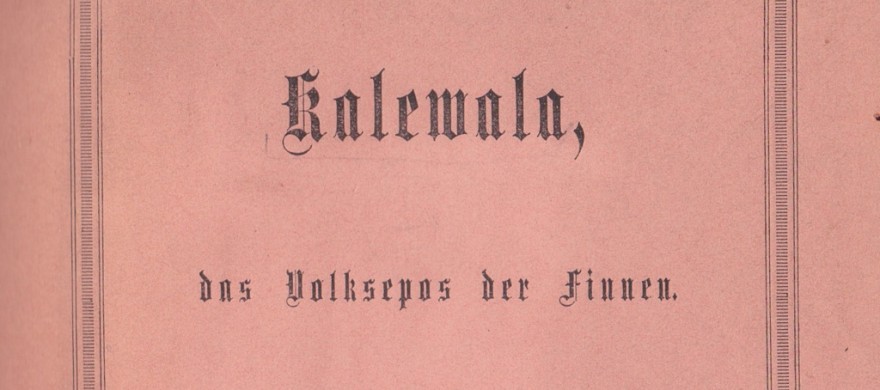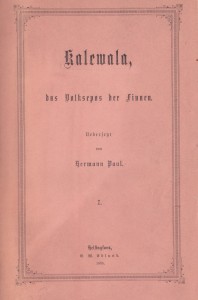Hermann Paul 1885–1886
Hermann Paul (1827–1885) was a German violinist who performed in the Berlin royal court opera and he was also the first violinist of the royal orchestra during 1848–1858. He travelled extensively for concerts and he performed, for example, in Berlin, Warsaw, St. Petersburg, Stockholm, Christiania (Oslo), Vyborg, Turku, Helsinki and in Hämeenlinna. In 1858 he moved to Helsinki and in 1861 he married Evelina Bonsdorff, who was from Finland.
Paul was a very diverse cultural persona in his own time: He was very interested in music and literature and through this he had a strong influence on the cultural history of Finland and on the foundation of several cultural institutions in the country. For example, he was among the founders of the Helsinki City Theatre (Helsingin Kaupunginteatteri) and the Sibelius Academy. He was also a well-known public person since he worked as a German language teacher in the schools in Helsinki as well as at the Alexander University in Helsinki. Above all, he gained international recognition when he translated literature in Finnish and Swedish into German. He has translated the 1885/1886 Kalevala and the Kanteletar from 1882 as well as some of the works by the nationally important authors Johan Ludvig Runeberg and Zacharias Topelius (for example, Die Könige von Salamis 1869 and Eine Reise in Finnland 1885).
Hermann Paul began working with the translation of the Kalevala in 1859 after he had made a trip to Lapland and was inspired by his experiences. He got help and support from his friend, poet, professor, and literary critic August Ahlqvist. A. Ahlqvist also proofread the translation that was based on the Swedish prose translation by Henrik Pantsar (1830–1904). The translation was published in two parts, the first of which came out in 1885, which was an anniversary year for the Kalevala, and the second part was published posthumously in 1886. Paul used a more varied poetic meter than Lönnrot and he motivated his choice by stating that only using the trochaic tetrameter was too “monotonous” in an epic of this magnitude. Besides the trochaic tetrameters he also used dactyls and, consequently, he managed to add some variety to the poetic meter.
When we compare the translations by Anton Schiefner (1852) and Hermann Paul, we first notice their titles: Schiefner regarded the Kalevala as a national epic and he gave it a mythical meaning. Paul, on the other hand, regarded it as an epic of the people and he interpreted it historically as the battle between the Lapps and the Finns. However, both translators emphasised that the Kalevala is the sort of nature poetry which corresponds to the ideal of the time period of romanticism and also the poetry of that time. There has been no need to change this kind of poetry when it was published.
It was not easy to introduce the Kalevala to the European readers since both translations were published in Finland and the readers and critics in Germany were mostly scholars and scientists who were dedicated to and interested in theories on epic tales. The opinions on the aesthetic values of the translations were divided. For example, Julius Altmann (1814–1873), who was a German archivist and journalist, preferred the translation by Schiefner and he motivated this by stating that the translation is a “brilliant German text”. Professor Georg Kahlbaum (1853–1905), who was a chemist and a researcher in the history of chemistry, agreed with Altmann and he motivated his opinion by stating that, compared to the translation by Schiefner, the translation by Paul was “wearisome” and did not equal “worthy poetry”.
When the translations were compared to one another, Scheifner’s translation as a whole was praised as a “philologically splendid work”, whereas Paul’s translation was praised because he had “created an artistic poem”. Roman Woerner (1863–1913), who was an expert on German studies and a playwright, presented the following conclusion:
““His (Schiefner’s) translation relates to the translation by H. Paul in the same manner as a thorough Aristophanes-translation by some philologist relates to the fascinating work by Droysen. It is a totally different thing to translate a text word-by-word than to transform someone else’s intellectual work with artistic mastery into one’s own literature.”
The translation by Paul was regarded as a masterpiece of German translation studies, as it was translated beautifully, fluently and correctly.
Voßschmidt, Liisa: “Saksan kautta eurooppalaiselle kulttuuriareenalle” – Kalevala maailmalla. Helsinki: SKS. 2012.

